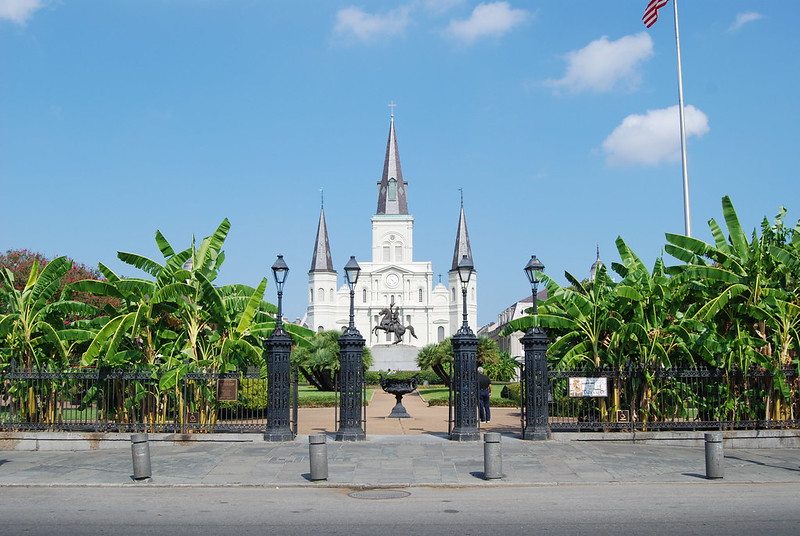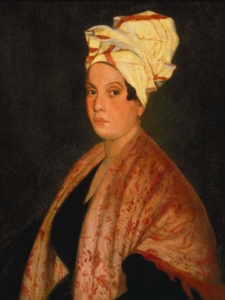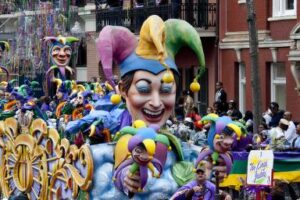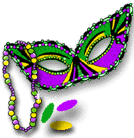
Home | Archives for December 2022





CLDA Members are encouraged to share news about their company. CLDA may share on social media, in newsletters or on the website.

Ready to share your news with CLDA or the industry media? Learn from these tips and tricks on how to get noticed.

Hello again my CLDA and industry colleagues,
As I begin edition four of the CRESCENT CITY CULTURE, I would like to look back a bit before moving forward, especially for those who may be reading this weekly glimpse into our rich culture for the first time. For those who don’t know, I am introducing New Orleans to you one week at a time as we lead up to our CLDA Final Mile Forum in February. Which, if you’ve checked your calendar, is about 6 weeks away. Don’t delay to reserve your spot. I know that each FMF always turns out to be a great meeting. However, this year’s FMF is shaping up to be one of the best FMF Meetings that I can remember. And as a charter member of the CLDA (MCAA then) that is a long look back and a lot of remembering. It is my hope and goal that through these weekly peeks into the Big Easy way of life, you will feel like a true New Orleanian when your feet hit our below-sea-level ground in February.
Over the first three weeks, you have learned about our Mardi Gras tradition, and know we will be in the heart of it during our FMF; you have been introduced to our city’s founder, Bienville, and discovered the origination of the Crescent City nickname; and met one of our most interesting and mysterious citizens, Marie Laveau, as well as learned that because of our above-ground cemeteries we have been also known as the City of the Dead.
As we continue our excursion through the New Orleans way of life and its geography, I have a question: what is the most familiar scene of New Orleans that you can picture in your mind? Could it be the one below of the St. Louis Cathedral with Jackson Square in the foreground?

Register for the 2023 FMF Today
Well, if you said yes, then you are in the majority. According to Trip Advisor, this is the most photographed scene in New Orleans and one of the most photographed scenes in the entire country.
To me, Jackson Square is the heartbeat of the French Quarter. To some that might be Bourbon Street. Although our French Quarter night life is as publicized as is spirited, I want you to know that the French Quarter, and Jackson Square in particular, takes on its own unique ambiance during the day. So, please take the time to experience the Place d’Armes, as it was called before bearing the name of our seventh president and hero of the Battle of New Orleans. But experience it during the DAY also.
The St. Louis Cathedral is the centerpiece of the square and is flanked by historic landmarks, the Cabildo and the Presbytere, both now museums filled with history and worth visiting during your trip. Lining the wrought iron fence around Jackson Square you will find artists ready to immortalize you with the Big Easy backdrop and street performers filling the air with the sound of jazz. Jackson Square is also surrounded by the elegant architecture of the upper and lower Pontalba buildings in which you will find both shops and dining. And to round out this carnival-like atmosphere, don’t forget Café Du Monde, where you can enjoy beignets and café au lait for breakfast, an afternoon delight or even a nightcap after indulging in a hurricane or two from Pat O’Brien’s.
Jackson Square is certainly filled with history. This story was written a few years ago in preparation of New Orleans’ 300-year anniversary. It will give you a little more insight to Jackson Square and allow you to enjoy a little more of our CRESCENT CITY CULTURE.
See you in February!
Hello again my CLDA and industry colleagues,
Get ready for NOLA – the CLDA FMF is getting closer and will be here before you can say alligator sauce piquant. And when you get to New Orleans, I hope you know much about our CRESCENT CITY CULTURE and really feel the ambience of the city. But for today’s little bit of fun, I think the word “aura” would be more appropriate.
New Orleans is known for many things; great food, jazz music, miles of bayous, the French Quarter, the Superdome and hosting Super Bowls, Mardi Gras, Jazz Fest and, of course, its below-sea-level terrain. Well, as a result of that last item there is another little thing that New Orleans is identified with… our cemeteries. That’s right. Many are above ground because of our negative elevation. Here’s another little thing you may not know… we have also been called the “City of the Dead” because of our many above-ground graves. There has always been a colorful aura and infatuation with the mystique of this part of our city.

Register for the 2023 FMF Today
With that in mind, let’s explore another curious aspect of our storied past and meet one of New Orleans’ more mysterious citizens… Marie Laveau, the queen of Voodoo.

Now, most New Orleanians don’t talk much about Marie Laveau, let alone, Voodoo, other than to speak about it in novel ways. Such as, we might say “don’t put the Voodoo on me,” when hoping bad luck doesn’t come our way. Or we may speak about the Gris Gris, which, honestly for years I thought it was someone putting a bad spell on you, but learned it is actually the opposite.
Not sure about you, but I know I was a little off regarding my understanding of Voodoo and Marie Laveau. Maybe your perception of this might not be exactly correct either. My perception was a result of the “Hollywood” version as depicted in movies. Some dark, evil ceremony done in the shadows as Voodoo Dolls inflicted pain on its victim. Well, I learned it is actually a mixture of religious and African culture that was practiced here during the dark days of slavery. Of course, there is much more to it than just that.
Marie Laveau’s mystique fell right into place with my “perception” of the Voodoo experience. I always thought she was sort of a witch doctor as described in New Orleans folklore. Well, as it turns out, Marie Laveau was many things. A hairdresser, a nurse and healer and fairly well connected with many people. And she certainly practiced Voodoo. As she took care of people in her healing role, she would use herbs and potions. This, and her practice of Voodoo, combined with her extremely large circle of acquaintances is in part why she has become a New Orleans legend.
If you want to find out more about Marie Laveau, then get to know her here.
And when you come to New Orleans if you now have that mysterious curiosity to explore “what is this Voodoo thing?” Then maybe you should visit the Voodoo Museum.
And what about this “City of the Dead” thing? Check out one of the cemeteries when you’re here for the FMF. I would suggest St Louis Cemetery #1. It is right on the edge of the French Quarter and that is also where you will certainly get some of our CRESCENT CITY CULTURE and find the resting place of one of this city’s most mysterious and possibly misunderstood citizens… Marie Laveau.
See you in February!
Hello my CLDA and industry colleagues,
I hope everyone enjoyed learning a little bit about Mardi Gras in our first edition of the CRESCENT CITY CULTURE. Our Final Mile Forum 2023 in New Orleans, which is only about 9 weeks away, will be going on as the city ramps up the Mardi Gras season with major parades beginning to roll that weekend. So, dust off your dance shoes and get ready “second-line” your way to the Mardi Gras Celebration… of course, after a day of engaging content and networking at the FMF 2023.
Today, meet the founder of New Orleans, Jean-Baptiste Le Moyne, Sieur de Bienville and how New Orleans became New Orleans.
I am sure that most know that one of the nicknames of New Orleans, which is the namesake of these weekly articles, is the Crescent City. This moniker came about because of the bend in the Mississippi River at The French Quarter. Well, it was Bienville who coined this name as he called it his “Beautiful Crescent.” Bienville, along with his older brother, Pierre Le Moyne D’Iberville, explored the Northern Gulf of Mexico in the late 1600s. When D’Iberville departed, Bienville went on to discover the swath of land in the lower Mississippi that would become New Orleans. The first two streets in the French Quarter running parallel to Canal Street are named for the brothers.

Register for the 2023 FMF Today
Bienville wrote to the Directors of the Company in 1717 that he had discovered a crescent bend in the Mississippi River which he felt was safe from tidal surges and hurricanes and proposed that the new capital of the colony be built there. Permission was granted, and Bienville founded New Orleans on May 7, 1718. By 1719, a sufficient number of huts and storage houses had been built that Bienville began moving supplies and troops from Mobile. (You might remember in the last CCC, Mobile, AL was once the capital of Louisiana.)
Following disagreements with the chief engineer of the colony, Pierre Le Blond de La Tour, Bienville ordered an assistant engineer, Adrien de Pauger, to draw up plans for the new city in 1720. In 1721, Pauger drew up the eleven-by-seven block rectangle now known as the French Quarter or the Vieux Carré. After moving into his new home on the site of what is now the Custom House, Bienville named the new city “La Nouvelle-Orléans” in honor of Philippe II, Duke of Orléans, the Prince Regent of France. New Orleans became the capital of French Louisiana by 1723, during Bienville’s third term.
Take a look at the street names in the French Quarter. You won’t find Main St, or 1st Avenue. The street names have purpose and meaning. Parallel streets to Canal Street start out with brothers, Iberville and Bienville as mentioned above. From there the streets alternate with Catholic Saints and illegitimate sons of King Louis XIV. Beginning with Conti, then St Louis, Toulouse, St Peter, Orleans, St Ann, Dumaine and St Phillip. The crossing streets are named for French Royal Houses. Decatur, Royal, Bourbon, Dauphine, etc.
So, when enjoying the ambience of the French Quarter, you can also enjoy a little history of the street on which you are partaking in your food, fun and libation and know that you are really enjoying our CRESCENT CITY CULTURE.
See you in February!
WASHINGTON, D.C., Dec. 15, 2022 — The Customized Logistics & Delivery Association’s (CLDA) Final Mile Forum & Expo will be held from February 9 to 11, 2023 in New Orleans. Mardi Gras will be in full swing during this, the industry’s largest gathering of last-mile providers and shippers. It will be held at the Hyatt Regency, which is minutes from the historic French Quarter, Arts District and Mississippi Riverfront.
The three-day event will be built around the theme of “Winning the Next Mile.” “The current final-mile environment continues to challenge many of us in this space,” says Event Chair Thomas Jowers. “This conference will be the year’s best opportunity for last-mile providers to expand their knowledge, connect with shippers, build their networks and explore the latest products and solutions to take on these challenges.”
Educational sessions will include:
In addition, there will be intimate round tables with shippers where couriers can discuss how to gain their business and learn more about what they are looking for. The conference will also offer ample opportunities for couriers to network with each other, to expand their footprints and to pick the brains of their peers to solve common problems.
Registration is now open at clda.org with discounts for CLDA members. Members receive more than a 45% discount. The conference also has a special rate for non-members who join when they register. Twelve vendors have already reserved their spots in the CLDA Exchange Hall, but there are still a few booths available on a first-come, first-serve basis. To reserve one of those spots, contact info@clda.org
About the Customized Logistics and Delivery Association
The Customized Logistics and Delivery Association (CLDA) represents the first to final miles of the supply chain in the US and worldwide. This non-profit professional association serves the needs of its 2,900 essential service members who are logistics professionals, carriers, shippers, drivers, air cargo logistics providers, 3PLs and vendors servicing today’s supply chain companies. The CLDA gives its members access to a diverse network of logistics professionals looking to create new business opportunities and share decades of practical insights. They provide an avenue for amplifying members’ voices on key issues and helps them participate in the regulatory discussions shaping the industry. The CLDA keeps members informed and educated on trends, current issues and best practices. For more information see www.clda.org.
Media Contact
Andrea Obston aobston@aomc.com
(860) 803-1155
Hello my CLDA and industry colleagues,
As you may know by now the CLDA will be holding its Final Mile Forum 2023 in New Orleans. Plan to attend now because that is only a couple of months away. Come join us February 9 through February 11, 2023. This is one FMF that you should not miss. Of course, all attendees will benefit from the great educational content, the networking opportunities and for all the programs the CLDA will be offering at this year’s gathering. It is always a great benefit to mingle amongst your industry peers to learn of their struggles and successes and of course, to share your own. However, this year I am also hoping all will attend for another reason… and that is, to enjoy the hospitality and charm that my hometown has to offer. Come experience the CRESCENT CITY CULTURE… 2023
Welcome to New Orleans!
Over the next 8 weeks be on the lookout for the CRESCENT CITY CULTURE where I will be sharing some interesting facts about New Orleans through articles, pictures, and my own take on what I call the Ambience of New Orleans.
You will get to know a little bit about the history of the city, places to eat and drink, and things to do. You will learn about our culture … like our music and food to name a couple. It is my hope that by the time you get your first whiff of grilled oysters after stepping off the plane, our local vibe will be instilled in you, and you will in fact be an honorary New Orleanian!
If there is ever a time to come to New Orleans, it is this year. WHY? Well, let me jump right into our first edition of the CRESCENT CITY CULTURE
Happy Mardi Gras!
♫ Down in New Orleans where the blues was born, it takes a cool cat to blow a horn ♪ Ah yes, those opening lyrics to the quintessential sound of Mardi Gras, sung by The Hawketts, “The Mardi Gras Mambo,” gets both locals and visitors alike in the mood to dance in the street. You can get your Mambo Grove on here: https://www.youtube.com/watch?v=L1fBDVNn1pU
Yes, my friends, it will Mardi Gras time down in New Orleans when you are here for the FMF 2023. Friday February 10th is the first night of the major parades that will lead up to Mardi Gras Day. And three will roll that evening passing about five blocks from the hotel.
Register for the 2023 FMF Today
How much do you know about “Fat Tuesday” and the Mardi Gras Season? Tuesday, February 21 is Mardi Gras Day in 2023. That day marks the end of the Mardi Gras season, and the beginning of Lent is the following day.

The Mardi Gras season is actually determined by two Christian holidays, Christmas and Easter. The season varies in length because Christmas is a stationary holiday, whereas Easter is not. Easter is the first Sunday following the first full moon after the Spring Equinox. Mardi Gras Day will be 47 days prior to Easter Sunday. So, Easter can fall on any Sunday between March 23 and April 25, thus making Mardi Gras Day fall on any Tuesday between February 3 to March 9.
As for the beginning of the Mardi Gras season, well that is the same every year. It is always 12 days after Christmas, which is January 6. This day is celebrated in Christian religions as the Epiphany, and also known as King’s Day. This day has also been referred to as Twelfth Night. In New Orleans we also know it as the day that the King Cakes come out. What’s a King Cake? Check this out to learn more about it.
Here are some other interesting things about Mardi Gras that you may not know:
The Colors of Mardi Gras are purple, green and gold. They represent justice, faith, and power, respectively.
Mardi Gras Day is the only day it is legal to walk the streets of New Orleans with a mask on. But you have to remove it at 6PM.
The French Quarter, and particularly Bourbon Street, is known for its partying atmosphere that extends well into the wee hours of the morning. However, the one time of the year that revelry comes to an end early is when the clock strikes Midnight on Fat Tuesday night, thus marking the end of Mardi Gras and the beginning of Lent. The NOPD will clear Bourbon Street on this day with the assistance of their Mounted Division.

Although the first celebration dates back to 1699, the first Mardi Gras Parade in New Orleans was in 1837.
Now, as far as the first Mardi Gras Parade celebration in the US, well it is believed that it was held in Mobile, AL in 1703…when Mobile was the capital of LOUISIANA. What? After doing a little research on that, I did find evidence to support that…Hmmm??
No matter where the first Mardi Gras parade was celebrated, who celebrates it today or how it is celebrated around the world, the ONE PLACE that puts on Mardi Gras with the passion, revelry, parades, and festivities like no other place in the world is… NEW ORLEANS BABY!!
Check out more here from Arthur Hardy, THE Mardi Gras Historian.
In closing here is one more fun fact about our culture:
New Orleans is eccentric if nothing else. The first Carnival Krewe was Comus in 1857. The second Krewe didn’t come along until 1870, but today there are more than 50. Don’t worry if your Cajun French is rusty: “laissez les bon temps rouler” is a phrase that you will hear much during Mardi Gras, and many others for that matter. Pronounced “Lay-say le bon tom roll-lay”, it means “let the good times roll.”
I hope to see everyone in February – “Laissez les bons temps rouler!”
HAPPY MARDI GRAS!